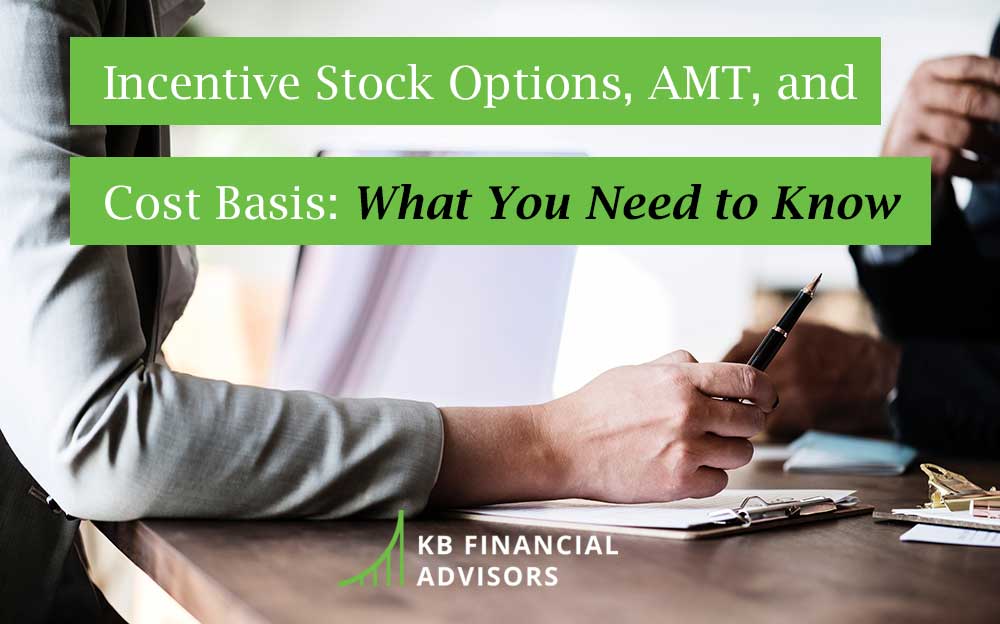If I had $1 for every time I had a conversation with smart-but-frazzled startup employees trying to understand the financial jargon around their ISO AMT, I could, well…. buy my wife and I a really nice dinner. 🥗 💑 🥂
Yeah, I know it’s not exactly millionaire lifestyle from that $1 per conversation, but it is a really, really nice dinner worth hundreds of dollars.
(Meaning that if you’re feeling confused around these things like ISO AMT and Cost Basis, you’re not alone. 😉)
So I’m going to use the next ~1,300 words to help you get a grip on what all this financial jargon is talking about.
That way, you can wrap your head around it and start doing something to improve your financial situation with the different stock options that you have… rather than continuing to put it off, saying you’ll “figure it out later” and lose money while you procrastinate.
Ready? 🤓
ISO AMT: An Overview
When you’re a new hire at a startup company, “stock options” are usually one of the biggest parts of your compensation and employee benefits package.
(After all, why wouldn’t the founders want to incentivize employees to make sure the company does really, really well?)
Sometimes it means you get RSUs (restricted stock units) that mean you can sell & cash out when the company IPOs, and sometimes you get ISO (incentive stock options), which give you the option to purchase shares in the company at a fixed price.
If you have ISO available to you, you should also have what’s called an “exercise price,” which is a fixed price you can buy shares at.
However, ISO also come with an expiration date, meaning that you only have until a certain time to purchase shares at the exercise price.
The good thing with ISO, though, is that you don’t have to deal with tax of this employee benefit until you decide to either exercise (buy some shares), or sell any shares that you’ve purchased.
If you sell your shares less than one year after you buy them or two years after the options are granted, any profit made is taxed as if it were ordinary income… like your salary or a bonus.
If you sell the shares from your ISO after you’ve had them for a year or more, they’re taxed at a reduced rate, because that income is now considered a long-term capital gain.
If you decide to exercise (or buy more shares at your set rate), you may or may not have to pay the Alternative Minimum Tax (AMT).
Here’s one of our articles with instructions on how to calculate whether or not you’ll encounter ISO AMT by exercising your options.
What is Cost Basis in Stocks? – An Easy-to-Understand Definition
“Cost Basis” basically just means how much you paid for your shares.
And as simple as that might sound, it’s a crucial detail that’s very, very important not to overlook when preparing your taxes.
To make a long story short, an accurate Cost Basis on your tax forms means an accurate tax bill and clearance with the IRS.
But an incorrect Cost Basis (whether intentional or not), could have one of two drastic effects:
- Paying too much money in taxes
- Paying too little & winding up with an IRS tax penalty with expensive fees and interest to pay
So… how is cost basis calculated?
Let’s say the Google (ticker: GOOG) has a current stock price of $165 and you buy 10,000 shares, your Cost Basis is this:
$165 x 10,000 = $1,650,000
Easy, right?
But the way you calculate cost basis differs depending on if you’re calculating it based on your ISO AMT.
ISO & Cost Basis
When it comes to calculating your Cost Basis with shares purchased via ISO options, it’s based on what you paid, regardless of what the market value was at the time of purchase.
So, if your buy-in price (or strike price) was $1 and your bought 10,000 shares, your Cost Basis is $10,000.
ISO AMT & Cost Basis
But if you hit AMT levels for the year, you don’t get to use your strike price to figure Cost Basis. Instead, you’ve got to use FMV, or fair market value, at the time you exercised.
So if you purchased 10,000 shares at a $1 strike price, but the market value was $10 at the time of purchase… you may have saved $9 per share at the time, but now you’ve got to use the full $10 to figure out your AMT Cost Basis.
So in the case of being at the AMT level, your cost basis is now 10,000 x $10 = $100,000—which is a pretty significant difference.
(And you can see why this is a MAJOR consideration in tax planning, can’t you? 😅😉)
Pssst… Here’s a great article we wrote explaining what AMT (Alternative Minimum Tax) is, and how it could affect you under the new tax laws: ISOs and AMT Under the New Tax Laws: What You Need to Know
What Happens When You Sell Your Shares?
When you decide to sell your shares, you’ll need to report BOTH Cost Basis calculations.
(This is where it can start to feel tricky, if it hasn’t already.)
So let’s use the same example of buying shares at a $1 strike price, while they had a $10 market value.
And then let’s say you decided to sell those shares while they were at a $30 market value.
For your regular gain, you made $29 per share on 10,000 shares, resulting in a gain of $290,000.
But on your AMT gain, since your Cost Basis was $10 per share and not $1, your gain was $20 per share, resulting in a $200,000 gain.
That’s a $90,000 difference that, if not reported correctly, you may over-pay taxes on, -or- underpay taxes on, and face a significant penalty from the IRS.
(And yeah, it kind of stinks to have to pay taxes on the same gains twice, but here’s an article we wrote to help you avoid that tax trap: How to Avoid the IRS Tax Trap on Stock Options.)
How to Properly Report ISO AMT Cost Basis
First things first, get as organized you can with the records that you have.
This is especially important if you’re reading this article BEFORE you choose to exercise your ISO options… disorganization can be costly.
Staying organized can help you avoid AMT, and make sure you don’t overpay in taxes.
The best way I know how to do this for yourself is to create a spreadsheet to use every single time you decide to exercise your ISO.
Set it up with 4 columns:
- Exercise Date
- Total # of Shares Exercised
- Exercise Price
- FMV (fair market value) at Exercise
Doing this will do a lot for proper filling and making sure you’re squared away with any and all IRS requirements in regard to paying taxes.
Also, keep copies of your tax returns… especially during the years that you decided to exercise your stock options.
And finally… as tempting as it may be to save money by self-preparing your taxes… don’t do it.
Getting someone on your side who knows tax law in & out—and especially all the tax laws and rules in regards to stock options—can save your lots of money and scary tax headaches.
ISO AMT and MTC (minimum tax credit)
A final reason the correct ISO AMT cost basis is so important is the minimum tax credit (MTC). Failure to correctly report AMT ISO cost basis slows your ability to receive the minimum tax credit. Properly reporting cost basis accelerates your AMT credit.
Go Ahead & Prepare for an IRS Notice
Filing taxes properly—especially when you’ve got extra income from things like stock options—takes a lot of work and attention to detail.
But no matter how diligent and detailed you are about keeping proper records… you may still receive a notice from the IRS.
Getting a notice form the IRS isn’t necessarily a bad thing, especially if you have nothing to hide.
However, keeping copies of your tax returns and spreadsheets like the one I mentioned above will be really, really helpful in clearing your name as soon as possible once a notice is issued.
Getting a Grip on Financial Jargon = Better Financial Decisions
See, I told you you were in good company if you came to this website not 100% clear on ISO, AMT and Cost Basis.
You can understand why it confuses so many people now, can’t you? 😅
Hopefully though, you’ve now got a better grip on the situation and can start planning how to use, buy, or exercise your different stock options.
And if you’d like some more help in detailed ISO, tax, or wealth planning beyond these two things, schedule a consultation with us.
<!– ScheduleOnce button START –><button id=”SOIBTN_ScheduleYourCallToday” style=”background: #70AD47; color: #000000; padding: 10px 20px; border: 1px solid #c8c8c8; font: bold 14px Arial; cursor: pointer;” data-height=”580″ data-psz=”00″ data-so-page=”ScheduleYourCallToday” data-delay=”1″>Schedule an Appointment</button><script type=”text/javascript” src=”https://cdn.oncehub.com/mergedjs/so.js”></script><!– ScheduleOnce button END –>






